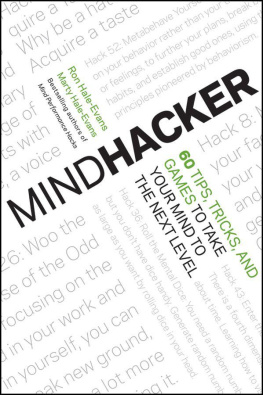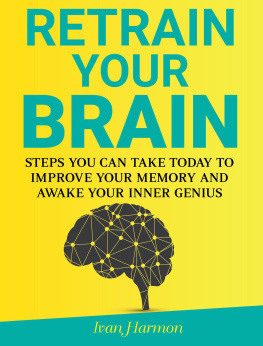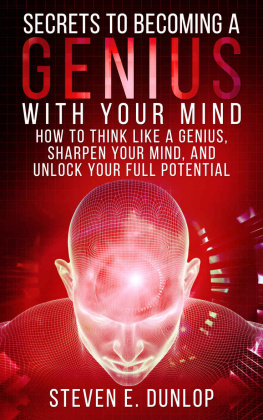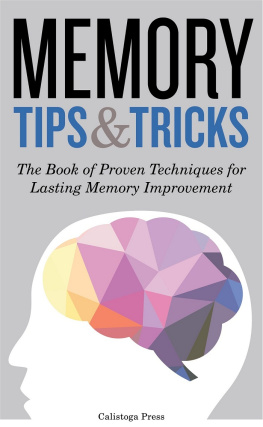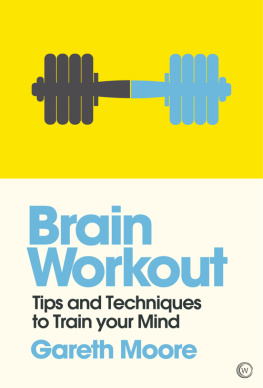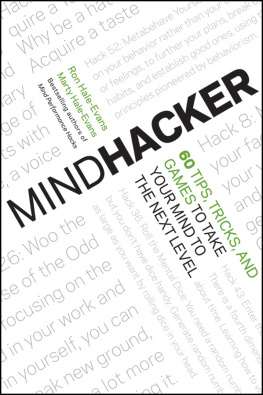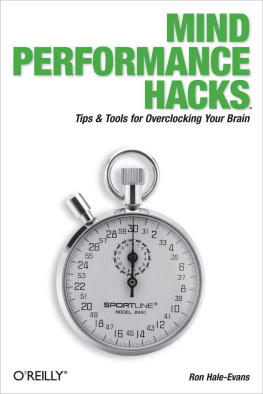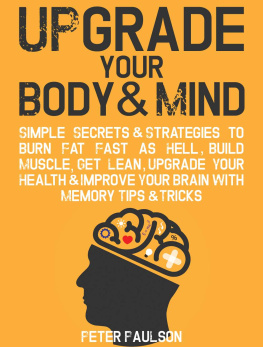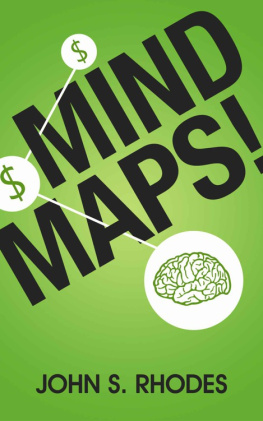Table of Contents
Chapter 1
Memory
In classical Greece, Mnemosyneusually translated as Memory was considered to be the mother of History, Music, Astronomy, and all the other Muses. Memory is fundamental to learning and knowledge, so we've placed our chapter of memory-enhancement techniques first. They include how to build memory on previously memorized environments (Hack 2, Build a Memory Dungeon), how to use technology to remember most efficiently (Hack 4, Space Your Repetitions), and how to draw old memories that you thought you had lost back to the surface (Hack 5, Recall Long-Ago Events).
Boosting your memory will help you both gather new information and track where you've been in your life, bringing your past with you into the future. Our goal is to help you hold onto all the intangible treasures your academic pursuits and life experience bring you.
Hack 1: Remember to Remember
Ever use a fancy mnemonic only to forget that you memorized anything at all? Prospective memory is remembering to do something in the future. Learn to cue your prospective memory in ways that go far beyond a string around your finger.
The traditional method to remind yourself that you need to remember something (and a staple of clip art collections) is a string tied around your finger, but there are many ways you can improve your prospective memory or remembering to remember. We'll explore two very different ways to cut that string while retaining its effectiveness, as well as how to harness the humble checklist and improve prospective memory in general.
In Action
The character Uncle Billy in the Frank Capra film It's a Wonderful Life is an example of someone using mnemonics (badly) for prospective memory. Not only does he have the stereotypical string tied around his finger, he seems to have dozens, and he can't tell them apart. It's no wonder that he forgets important things and gets flustered, and this drives the plot of the movie.
To avoid having dozens of identical strings tied to your fingersmetaphorically or literallywe've found there are two main paths to using physical memory cues to remember to remember: either differentiate your cues or overload a single cue .
Differentiating Cues
A memory cue, such as a string around your finger, is only one bit of information: It tells you either Remember something! (string on finger = 1) or Nothing to remember here! (no string = 0). Uncle Billy's problem is that he has a lot of strings on his fingers all shouting Remember something! but none of them are telling him what it is he should remember.
The key is to associate each string with what it's supposed to make you remember, and to strengthen that association through repetition. For example, when Marty notices that the car is nearly out of gas, she puts a blank sticky note on the windshield over the dashboard. When she sees it in the morning, it reminds her to look at the dashboard, which indicates she is out of gas and needs to go to the gas station.
Note
The sticky note on the dashboard is like a prospective memory hack you're probably familiar with: putting your briefcase or purse in front of your front door so you won't forget it in the morning. (This is the number one trick people are eager to share with Ron at parties when he tells them he writes books on memory.) What's interesting here is that Marty doesn't write a message on the sticky note, just as you probably don't write on your bag the required information is conveyed by the proximity of the memory cue to what you're trying to remember.
Marty has formed this habit over years, so now it's almost automatic. In this way, she is able to eke more than one meager bit of information out of the memory cue. Over time she has developed several such standard cues for herself, and now she has access to a whole armory of differentiated memory cues that not only remind her to remember something, but remind her what to remember .
Overloading a Cue
Ron takes the opposite approach. Rather than have multiple memory cues, each of which provides a small amount of information, he makes one cue represent many items of information. He calls this overloading , not in the sense that the cue is carrying more than it can bear, but as in some computer languages like Java, where the + sign might mean addition in an arithmetic context, but something differentconcatenationin a string context.
For example, Ron wears a wristwatch, and like most people, he usually wears it with its face on the outside of his wrist. However, because it's uncomfortable to wear a watch with the face on the inside of his wrist, doing so can be an irritant that serves as a memory cue. Thus, when Ron wants to remember something, he rotates his watch so that it is on the inside of his wrist.
But that's still only one bit of information. To overload the cue, Ron uses an old mnemonic device called a link system (www.ludism.org/mentat/LinkSystem). Because it can be indefinitely extended, it's usually sufficient to capture any information he needs to save while he's momentarily without his notebook or voice recorder.
Here's how the link system works. Let's say Ron has a list of three items to remember while he's driving: He has to buy gas on the way home (like Marty), he heard a review on NPR about a book he wants to check out, and he just remembered he has a meeting at work when he arrives. To remember these three items, he tells himself a connected story about what he has to remember, starting with his watch as an anchor:
- First, he imagines that a gasoline pump nozzle explodes through the glass on the front of his watch, spraying gas everywhere.
- Second, for the book, which let's say is The Hidden Reality : Parallel Universes and the Deep Laws of the Cosmos by Brian Greene and is about cosmologythe Big Bang, multiverses, string theory, and the likehe imagines that the gasoline all over his car is ignited by a spark within the cabin and causes a new Big Bang. But he wants to remember the title is The Hidden Reality , so he imagines that the Big Bang is sucked into his back pocket, where it forms a hidden pocket universe.
- Finally, he wants to remember the meeting, so he imagines that the people who will be at the meeting decide to hold it in the pocket universe in his pants.
Absurd? Yes. But you'll remember a story like this because it's absurd, and the next time Ron checks his watch (such as when he gets to work) and he's somewhere he can write or type, he too will remember he has a list of items attached to his watch. He will then transcribe them promptly to his catch (Hack 3, Mix Up Your Facts), performing any to-do items immediately if he can, such as getting to that meeting.
Checklists
In his 2009 book The Checklist Manifesto , physician Atul Gawande describes how adopting the simple technique of creating and filling out checklists is revolutionizing medical treatment. Like flying aircraft or spacecraft (aerospace has used checklists for years), medical procedures have become too complex to rely on human memory alone.
Thus, in 2001, Peter Pronovost at Johns Hopkins Hospital made a list of steps for doctors to take before an operation that can help prevent infections (known as central line infections ) from use of a catheter pushed through a vein into the heart. Many of the steps were as simple and obvious as the doctors' washing their hands with soap. Pronovost asked nurses in his unit to observe the doctors and check the steps on the list; in more than a third of the cases, the doctors skipped at least one of these simple steps.
Pronovost then persuaded the hospital to allow nurses to stop doctors if they skipped one of the steps. He and his team followed the number of ten-day central line infections for a year. The rate went from 11 percent to zero, with similar results for the next 15 months. Gawande recounts how Pronovost's team estimated that in slightly more than two years at Johns Hopkins, the checklist prevented 43 infections, saved 8 lives, and saved the hospital $2 million dollars. Thus began the use of medical checklists at Johns Hopkinsand, as Pronovost taught others the technique, throughout the United States.

